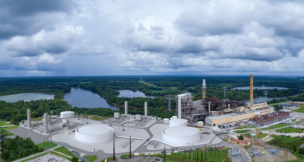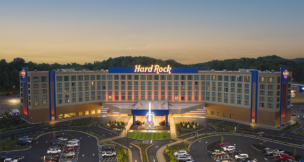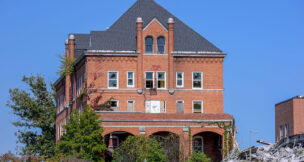West Falls Church on track for $1.2 billion transformation
Developers are expected to break ground this month on the first of three mixed-use projects near the West Falls Church Metro station with a total investment of about $1.2 billion. Each piece comes together to complete a puzzle that will transform about 40 acres of vacant land, parking lots and Virginia Tech’s Northern Virginia Center […]
Metro releases 10-year strategic plan for development
The Washington Metropolitan Area Transit Authority, which runs Metrorail and Metrobus, released its first-ever strategic plan for joint development on Thursday, announcing an ambitious initiative to bring in 26,000 new housing units in Virginia, Maryland and Washington, D.C. The document says that 40 Metro stations — including six in Northern Virginia — have more than […]
Richmond pares down Diamond District developer pool
Story updated, March 24 at 11:45 a.m. The city of Richmond announced Wednesday that six competing development teams have been chosen out of 15 applicants to continue in the competition to redevelop the Diamond District area near the Richmond Flying Squirrels‘ stadium. The city requested applications late last year for the 67.57-acre site, which would […]
Fairfax County developer John ‘Til’ Hazel Jr. dies at age 91
John T. “Til” Hazel Jr., a major force behind the development of Tysons Corner and several planned communities in Fairfax County in the late 20th century, as well as a significant booster of George Mason University, died Wednesday at age 91. An Arlington native, Hazel was also an attorney and graduated from Harvard University and […]
Breeden Construction hires marketing manager
Richmond-based Breeden Construction has hired Corbin Matacunas as the company’s marketing manager, Breeden announced Friday. Matacunas will be responsible for conceiving and executing marketing strategies and tactics that drive growth, in addition to working on brand development and messaging. “Corbin is results-oriented and highly collaborative, which makes him a strong cultural fit,” B[...]
The Meridian Group buys 277 acres in Winchester for industrial park
Bethesda, Maryland-based real estate investment firm The Meridian Group has purchased 277 acres of land in Winchester along Insterstate 81 and has plans to develop an industrial park on it. The purchase price of the land was not disclosed and is not yet available from public land records. The Meridian Group acquired the property this week […]
Pentagon City plan aims for higher density
A major study that will shape the future of Pentagon City is entering its final stages. The Arlington County urban village has grown from empty fields and warehouses in the 1950s to become one of the Washington, D.C., area’s busiest neighborhoods. With construction plans now under community review for Amazon.com Inc.’s HQ2, Pentagon City is […]
Long-term care
Just over a year after becoming CEO of VCU Health System and senior vice president for health sciences at Virginia Commonwealth University, Dr. Arthur Kellermann says the institution’s commitment to providing high-quality medical care while also addressing issues of health equity was a big part of what drew him to take the job. “Most medical […]
Amazon has hired 3,500 HQ2 workers
Amazon.com Inc. has hired 3,500 of its 25,000 planned workers for HQ2, the tech behemoth’s $2.5 billion East Coast headquarters in Arlington. Meanwhile, construction on the two office towers for HQ2’s first phase, Metropolitan Park, is more than halfway complete, company representatives said during a site tour Wednesday. Amazon has added about 500 […]
Fairfax-based Peterson Cos. opens self-storage division
Fairfax-based real estate company The Peterson Cos. has formed a self-storage division, the company announced Monday. It is the company’s first new division in more than 35 years and Jim Mertz will run it, the company said in a news release. Mertz joined Peterson Cos. in 2015 to lead the development effort for Promenade at […]
New luxury apartments coming to downtown Norfolk
With $56.2 million in financing in place, Marathon Development Group’s Frank “Buddy” Gadams is ready to start work on “Gravity 400 Apartments,” in downtown Norfolk, Berkadia Commercial Mortgage LLC and Breeden Construction announced. Located at 400 Waterside Drive, the 273-unit high-rise apartment tower will be have studio, one-, two-, and three-bedroom floor plans, in a [&he[...]
Henrico expands development incentive program, amends tax credits
Henrico County announced this week it is creating a redevelopment incentive program for parts of the county that are in need of renovation. Henrico Investment Program was unanimously approved by the county board Tuesday, and the program is expected to launch in January. Incentives for development and reinvestment will be available for projects along parts […]





















